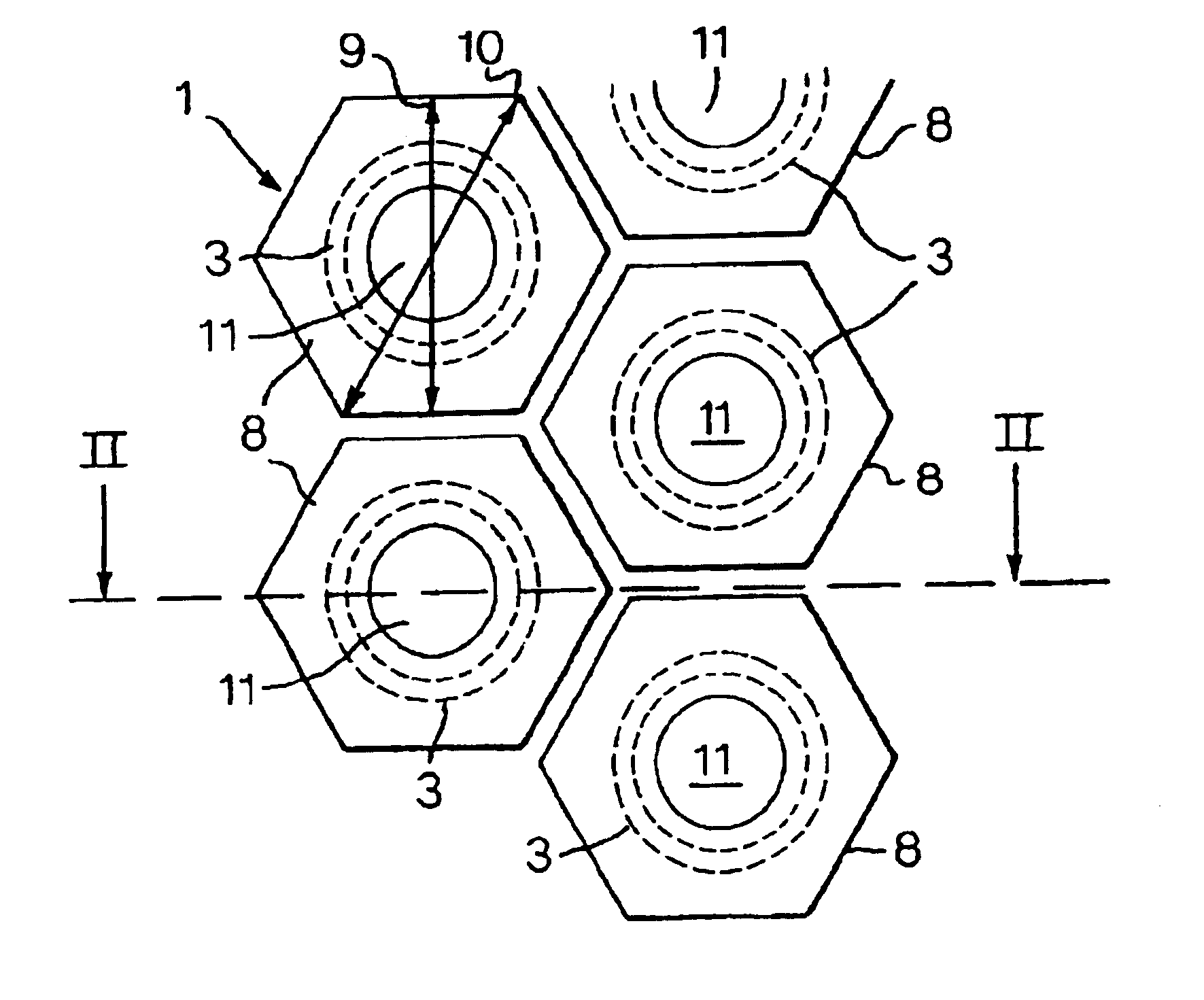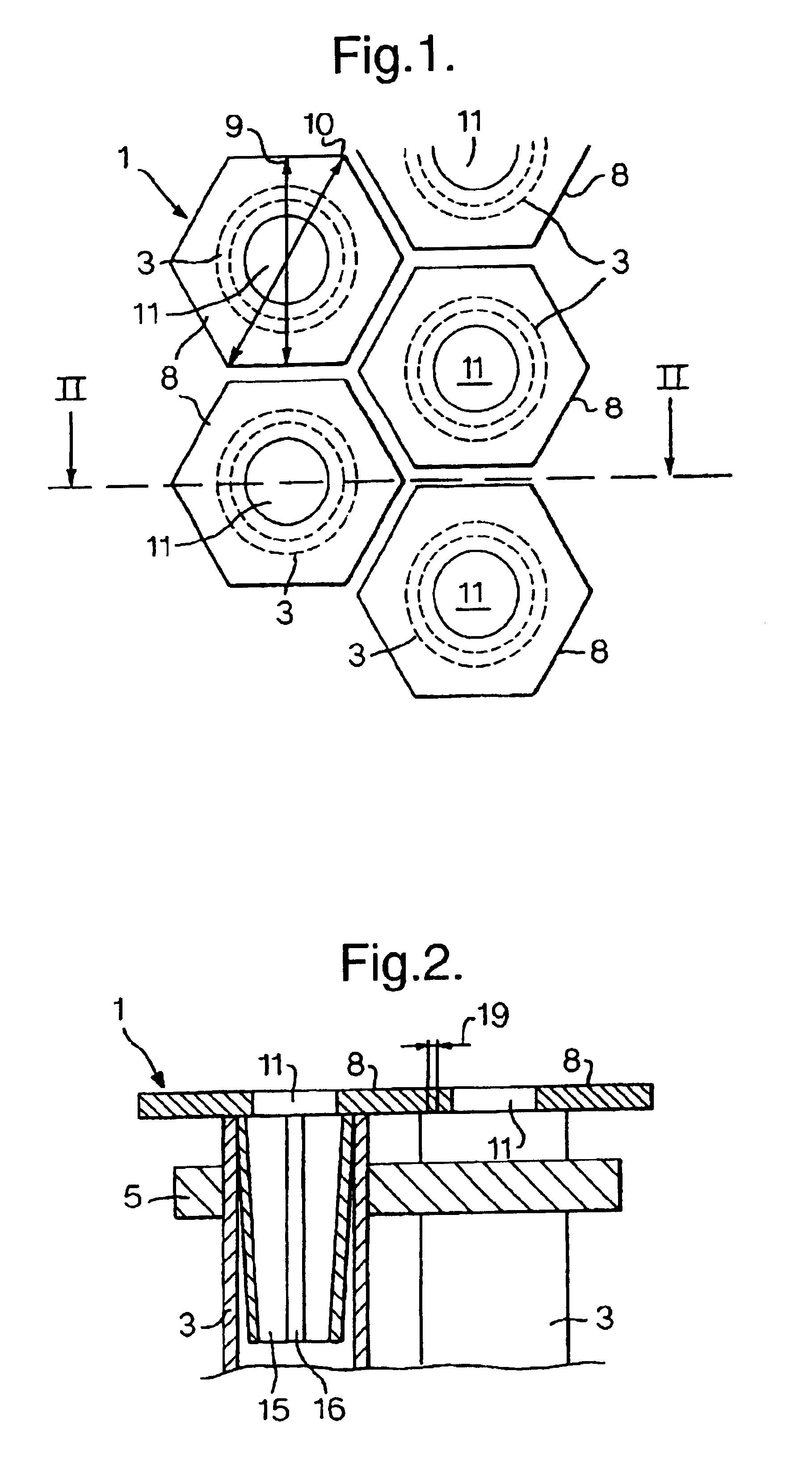Process for loading a reactor
- Summary
- Abstract
- Description
- Claims
- Application Information
AI Technical Summary
Benefits of technology
Problems solved by technology
Method used
Image
Examples
example
[0031]Four chemical reactors, each comprising about 3000 vertical reactor pipes, each reactor pipe having an outer diameter of 45.2 mm, an inner diameter of 39.2 mm, and a length of 12.8 m, the distance between neighbouring pipes being 63 mm, were loaded with catalyst particles having the basic shape of a cylinder with a diameter of 8 mm and a length of 8 mm.
[0032]Loading devices were used, each of which was made of polypropylene and consisted of a multitude of hexagonal plates. Each hexagonal plate was 59.0 mm across the minor axis and 69.0 mm across the major axis, with a thickness of 5.0 mm, and had a single central hole of 23.8 mm ({fraction (15 / 16)} inches) in diameter, and a slotted insert extending at a right angle from the edge of the hole. Each insert was in the form of a tapered pipe 30.0 mm in length, 39.0 mm outside diameter, 35.0 mm inside diameter tapering to 38.0 mm outside diameter and 35.0 mm inside diameter, and had a compression slot 3 mm wide extending the full l...
PUM
| Property | Measurement | Unit |
|---|---|---|
| Fraction | aaaaa | aaaaa |
Abstract
Description
Claims
Application Information
 Login to View More
Login to View More - R&D
- Intellectual Property
- Life Sciences
- Materials
- Tech Scout
- Unparalleled Data Quality
- Higher Quality Content
- 60% Fewer Hallucinations
Browse by: Latest US Patents, China's latest patents, Technical Efficacy Thesaurus, Application Domain, Technology Topic, Popular Technical Reports.
© 2025 PatSnap. All rights reserved.Legal|Privacy policy|Modern Slavery Act Transparency Statement|Sitemap|About US| Contact US: help@patsnap.com


